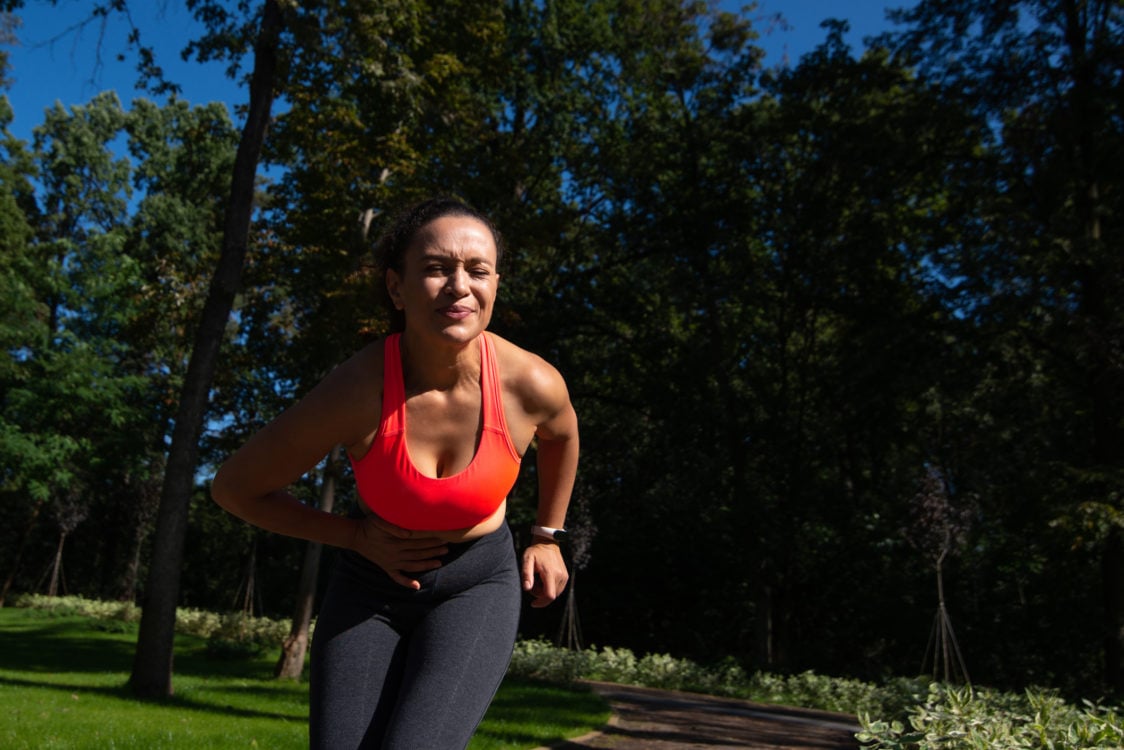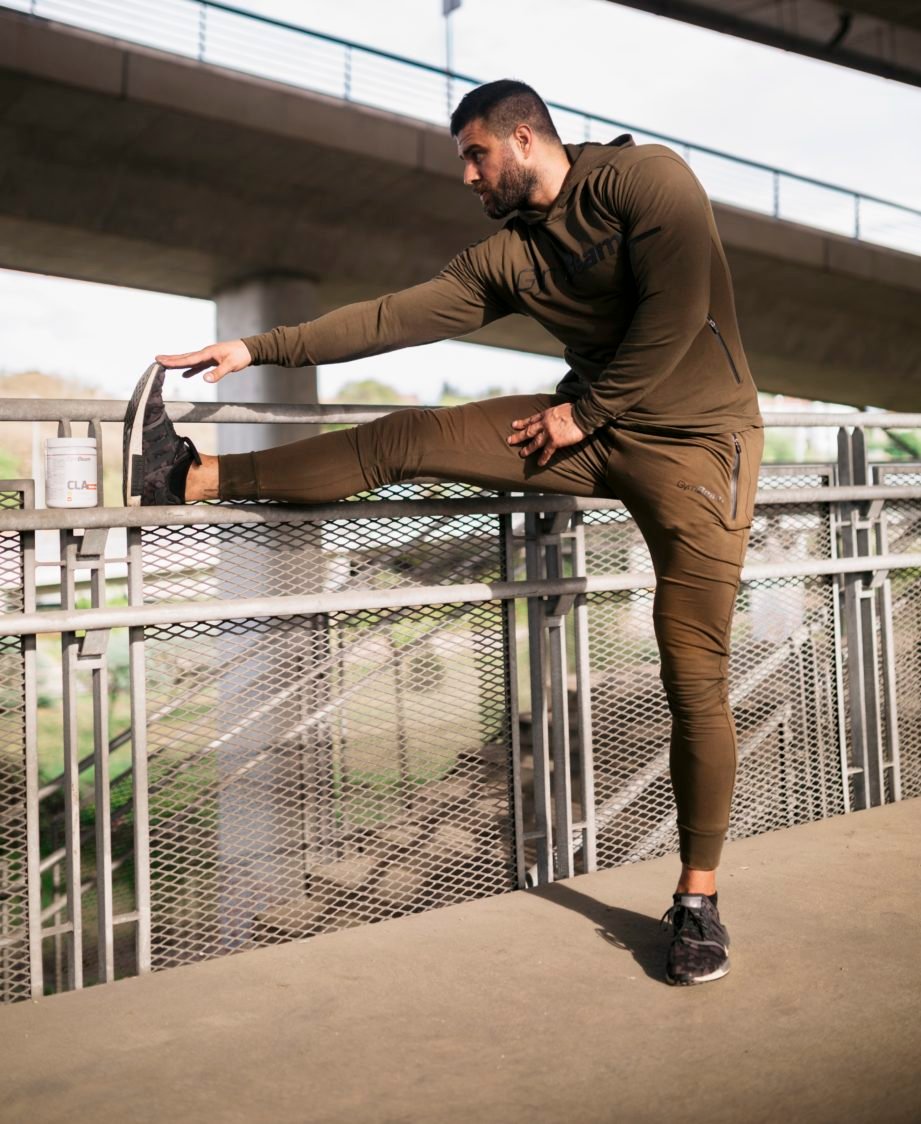Table of Contents
When lying on the couch do you imagine what it would be like to run with a smile on your face along the trails, greet other runners and enjoy this exercise to the maximum? Or do you dream of getting on a bus without your lungs burning unbearably after 100 meters? Whether you are drawn to running by the desire for a slimmer figure, better fitness or for mental rest, we have good news for you. Finally, it’s the right time to start. In today’s article, we have a simple guide for you, thanks to which even the laziest can start running for the first time.
How to prepare for your first run?
You’ve been plucking up the courage for your first run for months, and it still hasn’t happened yet? You really don’t have to wait when the stars align, nor do you need to use the supernatural power of a full moon to do so. At least at first, however, it is good to focus on a few basic things. If you were to run unprepared, your first run might be the last. So keep in mind that whoever is ready is not surprised. And if you need a little more motivation at first or are still thinking about what running will bring you, then you should not miss the article 11 Reasons to Start Running. How Will It Change Your Body?
1. Choose the right shoes for running
Has anyone ever told you that running is great because you don’t really need anything for it? That’s not entirely true. If we were to focus in on one thing that you really can’t do without, it would definitely be high-quality running shoes. You don’t have to buy the latest model which is used by the world’s leading runners. However, if you do put on running shoes with straight rubber soles, in which you lift weights because they help you with stability, it is more than likely that instead of a relaxing run, your feet will suffer. When choosing your first running shoes, it is ideal to seek expert advice. An expert can even give you a gait analysis, based on which you can then choose shoes that are just right for you.
Think of buying high-quality running shoes as your initial investment that will pay off many times over. It’s kind of like when beginners get a gym pass. When they have it, they don’t want it to expire, so they begin training. In addition, the right footwear can help you avoid unpleasant pain, injuries and increase your love of running. The important thing is that the shoes are designed directly for running and can cushion any shock. For starters, the best option will be universal footwear that is suitable for all terrain. If you try on shoes, don’t be afraid to spend several minutes in them, jump in them and try to run around to make sure they are comfortable. [1] [2]
Maybe you’re afraid the running won’t last long, so you’re postponing the shoe investment. But rest assured you will use them enough even if you do not run. As a rule, such shoes are more gentle on joints and the musculoskeletal system as a whole, so they will do you a great service during walks, trips and similar activities.

2. Choose comfortable clothes for running
Novice runners may have trouble estimating the ideal number of layers to wear in particular weather. And it’s not surprising. Whether you feel warm or cold, it’s not just the outside temperature that affects you, but also the rain, wind, snow or sun. Moreover, each person is different – a sweatshirt that makes one runner feel cold can keep the other warm enough. However, in order to give you a better idea, I will break down the specific clothing options that have worked well for me personally in given temperatures. You can be inspired or gradually develop your own weather-specific dress manual.
Approximate temperature | Clothing layers |
|---|---|
| -15 to -5 °C | Hat, neck warmer, thin functional long-sleeved shirt (absorbs sweat and keeps you warm), warm sweatshirt (warms and maintains temperature), thin jacket (which does not let in wind or moisture), warm leggings, thin functional socks (for example, with merino wool mix), warm socks and light sports gloves. If you’re running in the snow, you shouldn’t skimp on shoes with non-slip soles. |
| -5 to 5 °C | Thermal sports headband, thin functional long-sleeved shirt, a warm sweatshirt (if it snows, rains or the wind is blowing, it is advisable to wear a light jacket), warm leggings, warm socks, or you can also wear thin sports gloves. |
| 5 to 10°C | Thin sports headband, functional T -shirt with long or short sleeves, warmer sweatshirt, leggings (they can be insulated), socks (if you get cold feet, wear warmer socks, in cold weather always choose such that your ankles are covered). |
| 10 to 15°C | Functional long-sleeved T-shirt (it can also be lightly insulated), thin leggings (with long legs), functional socks. |
| 15 to 20°C | Functional T-shirt with short or long sleeves, three-quarter leggings, thin functional socks. |
| 20 to 25°C | Shorts, functional short-sleeved shirt and socks. |
| 25 or more °C | The less the better. All layers should be of functional and lightweight material so that the body does not overheat unnecessarily. |
If you don’t run too intensely in winter and spend most of your time walking, be aware that you won’t be warm right away. So you’d better wear an extra layer. Always try to make functional layers the basis of your running outfit, which will absorb sweat and cool or warm you as needed.
In summer, on the other hand, focus more on lighter materials that don’t make you sweat as much. At the same time, keep in mind that you will be moving more in your clothes.
I would never forgive myself for not providing two more handy tips for women:
- A pair of shorts that end just below the bottom might not be the best option. You want to enjoy running, not think all the time that you feel rather uncomfortable and everybody is watching. Opt for shorts that end at least mid-thigh. Ideally, they should be fitted with an anti-slip rubber on the bottom hem to prevent them from rolling up, or choose running shorts with a liner. This will allow you to move without undue exposure.
- If you have larger breasts, choose a tighter bra that will provide sufficient support.
You might be interested in these products:
3. Do not run hungry or after food
Do you know what running has in common when you’re very hungry, and running when you’re overfed? In either case, you’ll wish it was over, and you’d be home soon.
If you last ate breakfast at 6 a.m. and at 2 p.m. you triumphantly decide to go jogging for the first time, it is quite possible that you will face fatigue, lack of energy or irritability. You won’t feel much better whilst running even if you eat roast duck with five dumplings for lunch at noon and head out to exercise within an hour.
Surely, you already have an idea of what time you are eating approximately and how long you spend on digesting particular foods. After a larger course, such as breakfast or lunch, you should wait at least two hours before engaging in more intense activity. However, if you only have a small snack during the afternoon, such as half a banana with yoghurt, you will probably be able to go out a few minutes after finishing it. It is up to how you feel, listen to your body and consider its needs. You may eventually find that exercising on an empty stomach is best for you as soon as you wake up. However, if you are not used to exercising in the morning on an empty stomach, you cannot know how your body will react to such activity. So it is better to start exercising after your first meal.

4. Avoid extreme weather
They say there’s no such thing as bad weather, just a poorly dressed runner. That’s definitely true, but not for your first run. You are not Wim Hof to run a marathon at -20 °C in shorts and sandals. Nor is it ideal to run for the first time at noon when the thermometer shows 35 °C. Instead of the joy of running, you could bring about sunstroke.
If you can, choose a day for your first run when there is no rain, no wind and the temperature is somewhere between 5-25°C. Such weather will help prevent your first run from becoming a Hollywood drama reminiscent of a fight for survival. When you choose the right conditions, there is a high probability that this will not be your last run.
5. Assess your current fitness level
You have a marathon coming up in a month, so you’re going on your first run today to get some more practice? I don’t think you have chosen the right tactic. Running races can be a great motivation so you don’t stop training and have a specific goal to pursue.
However, before you sign up for a mass race that only has 5 km, at least size up the run to see if it is really the sport you want to devote yourself to. When you feel like you are at least partially ready, then you can start thinking about participating in running races.
You should make a similar assessment of your options and abilities before your first run to have an idea of what to expect from yourself. If you practice HIIT regularly at home or ride a bike at pace for tens of kilometres without much trouble, then it is quite possible that you can run several kilometres without much trouble the first time too. But if you’ve spent the last few years lying on the couch and gym is a dirty word for you, don’t expect it to go smoothly. This will not work.
You probably won’t feel comfortable, your lungs will burn after a few metres, and eventually, you’ll end up walking anyway. The start out always hurts. The consolation may be that it won’t get any worse. It’ll be a little better next time.
6. Choose a suitable terrain
Feelings from your first run will also affect to a large extent the terrain you choose. You probably know that steep slopes where you avoid trees and jump over fallen logs are probably not the right thing to do. A flat with a gentle slope that you can eventually climb seems like a better option that won’t discourage you from running. As for surfaces, try to choose a straight forest trail or dirt road that is more pleasant to tread than concrete or roads. Running in the great outdoors will probably keep you more entertained, and at the same time you will avoid overcrowded bike paths where you don’t know whether to dodge a cyclist, a skater or a mum with a stroller first. If you have headphones in your ears, the less travelled route is also safer for you.
7. Watch videos regarding the correct running technique
- Running is a natural movement
- Small children can manage running too
- There’s nothing in it, just take a step and run.
Have you heard any of these sentences before? It’s quite possible, they’re all true in nature. However, if you’ve only been lying on the couch for a few years now, it’s probably a lot more natural for you to lie down than run. Before your first run, it is therefore a good idea to focus on theoretical preparation, which can help you in many ways. It may also help you avoid injury or pain caused by any wrong footing. The internet is full of tutorials to show you how to land on your foot properly, how your posture should be and how to engage your arms.
Sure, you’ll probably have enough to worry about on your first run, and you won’t even think about technique. With each run, however, you’ll get better, and you’ll gradually begin to recall how the runner described the right footfall in the video. You may well be able to try it yourself when you run.
It is much easier to get the right technique right from the get go than it is to learn the wrong technique.
What to focus on?
- Straighten up and keep your head stretched.
- Tilt your body slightly to be ready for any natural forward movements.
- Don’t bend your shoulders and stick your bottom out too much.
- Avoid the X-shaped foot stance.
- Keep your arms bent at an angle of approximately 90 degrees at the elbow. Maintain them parallel during movement.
- Try to land on the middle part of the foot, not the heel. If you adopt this rule, your body will be better able to withstand harder impacts, and you can also run faster. [3]
8. Breathe
Do you have videos with the right running technique and are you convinced that nothing will surprise you anymore? You may well know what the right attitude and ideal impact looks like. However, some tutorials forget one of the most important things when running, and that is to breathe. By breathing optimally, you will help to deliver enough oxygen to your muscles, thanks to which you will be able to gain maximum performance. With the right breathing, you can also prevent unpleasant stinging of your side, which can often occur especially in novices.
How to breathe properly?
When running, you have the choice of breathing through your nose, mouth or combining both options. In colder weather, it is definitely better to breathe through the nose. The air is heated, filtered and moistened before it gets further into the body. If you already have better physicality, you will usually breathe through your nose and run at a milder pace. You can hardly do this whilst sprinting. However, in any case, try to breathe right down into the abdomen to maximize oxygen supply to the body.
Try to make your breathing regular. You can try using the 2:2 formula or 3:1 formula. What does that mean?
- For the 2:2 formula, take a deep breath over two steps and exhale over two steps.
- For the 3:1 formula, take a deep breath over three steps and exhale over one step. [3]
Try for yourself what will suit you better. You can even alternate these breathing formulas according to your pace. Don’t worry if you can’t master a formula in the beginning and you’re just panting like a parched dog. It gets better with time, you just have to persevere. If you are interested in more information about proper breathing during exercise, read our article How To Breathe Properly When Running and Exercising, and Why It Is Important?

9. Don’t overdo it in the beginning
Your new running shoes are on, your route selected, the weather is in your favour, and so you get excited and expectant to run as fast as your feet can…but they’re not enough for you. And neither are your lungs. After a few hundred metres, the enthusiasm drops and you come home disappointed and angry with yourself.
Don’t worry, it doesn’t have to end this tragically. The bottom line is don’t overdo it at the start. Don’t start with a sprint. You are not racing in the 60 metres like you did in primary school. Your goals are, I suppose, higher and you want to run a longer distance. Therefore, start out slowly, your pace may match a more brisk walk. You should be able to maintain that speed for a while. As soon as you feel you can’t, feel free to walk. When you have breathed it out a little, run again gently. If you can do this, you’re well on your way to running even longer stretches of time at a moderate pace. In this way, you will effectively build your aerobic endurance, which will gradually help you to accelerate and lengthen your routes.
10. Set realistic goals for yourself
This point is closely related to the previous one, when we advised you not to overdo it at the start. If you imagine running 15 kilometres at a moderate pace the first time, you are likely to be disappointed. Your body is not used to the new exercise, so it is important to set a more realistic goal that you are more likely to be able to achieve. It is ideal to choose a distance for the first run that you can walk without any problem. Do you have your route where you go for a walk on the weekends? Try to at least partially run it.
If you don’t go for walks, maybe 5 kilometres will be perfect for you the first time. While you’re planning your route, keep in mind that you still have to go back. So take a route that’s not too far from your home so you don’t get into a situation where you’re exhausted, thirsty and miles from home. Are you interested in how to remain interested in running? Read our article 5 Tips Which Will Help You Stay Active, Motivated and Keep Exercising At Home.

11. Do a warm up before running
Do you work from home and travel only between the fridge, office chair and toilet during the day? Then it’s probably not the best idea to just start run out without any type of movement beforehand. You might well feel clumsy, cumbersome, and your performance wouldn’t be worth much either.
Therefore, before the run itself, stretch and warm up the muscles, this better prepares them for the exercise. For a while, you can jump over a jump rope at a gentle pace or try the running ABC’s.
If you haven’t heard of it before, it’s a set of elements, such as the old familiar straight leg run and butt kicks, that should be included before the process. You will greatly increase the movement of stiff legs throughout the day, improve coordination, footwork and increase the likelihood of avoiding injury.
It is also advisable to include stretching before running, which will support your flexibility. You may perceive warm-up and rapid stretching as unnecessary or a waste of time. However, if you do not underestimate this stage of preparation, you will run much better. If the weather’s nice, warm up outside. It will tune you in nicely to the upcoming activity. In winter, it is better to devote yourself to this preparation from the comfort of home so that you do not get too cold. [3]
12. Take a running partner with you
Two is better than one, and if you start with a run, you’re sure to appreciate a partner who will support you, motivate you, and possibly suffer with you. What’s more, if you go out together, there’s a better chance you won’t give up on your workouts by mutual consent. So look around and try to pick out a friend who might be on the same running level as you. You can also be helped by acquaintances who run regularly and can explain the correct technique. But don’t count on them for longer runs together in the beginning.
If you prefer to exercise alone, at least equip yourself with a pair of jogging headphones and a wicked playlist that will not allow you to give up. Listening to podcasts can also help. If you immerse yourself into the story, you might completely forget that you’re actually running.
13. Try to enjoy your first run at least a little
Easy to say, isn’t it? Try to make running a challenge for you, but don’t make excessive demands on yourself. Choose a route that is adequate for beginners, and if you can’t handle the pace, slow down or walk. Observe your surroundings and rejoice because you made it. It wasn’t just words, but you really ran. This is a great start to increase your love of running someday.
What should you remember?
So, are you ready for your first run? We believe that thanks to our advice, you can really do it, put on your running shoes and get going. It may well be unpleasant and uncomfortable for the first time, but it will cease over time. What separates successful people from others is that the first failure does not deter them, and they go on to pursue their goal. So think about it and be patient. In time, you will surely love it, and perhaps then you will run your first marathon. And if not, never mind. There are many other great sports to pursue. The main thing is to enjoy the freedom of movement.
How are you going with it – are you considered a regular runner, or are you waiting for the right moment to put on your running shoes for the first time and head out? Share your experience with us in the comments section, and if you liked this article, don’t forget to share it among your friends.
[1] Gear Up With the Right Running Shoes – https://www.runnersworld.com/gear/a20842305/how-to-buy-the-right-running-shoes/
[2] How to Choose the Right Running Shoe FOR YOU! – https://www.instructables.com/How-to-choose-the-right-running-shoe-FOR-YOU/
[3] How to Start Running – https://www.rei.com/learn/expert-advice/running-basics.html
[4] Hunter L Paris et al. – Warm up intensity influences running performance despite prolonged recovery – https://doi.org/10.1177/17479541211004248


Add a comment